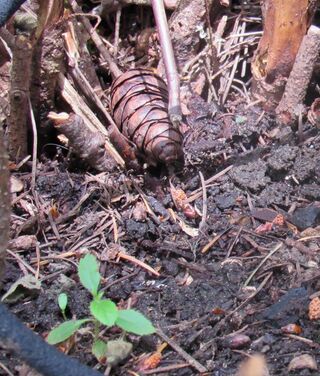Beauty
The Legacy of Growth
A Personal Perspective: We find out what matters to us in extremity.
Posted August 1, 2022 Reviewed by Ekua Hagan
We find out what matters to us in extremity. A few months ago, I was hospitalized for a life-threatening condition that came out of the blue. I’m better now, seemingly out of danger, but I’ve not forgotten what I saw at that time and I don’t want those perceptions to fade.
The story starts with my noticing years ago that there were no small Madrona trees on our acre and a half of land in a rural area. There were towering trees several decades old but only one juvenile about 8 feet high. Alarmingly, we found that small trees of this unique species were relatively scarce in a nearby 1200-acre forest where we often walk. The ones we sighted put forth robust hopeful growth in the spring but most of this was quickly eaten by deer. It seemed that the future of these trees was being devoured.
The Pacific Madrona is a hardwood tree that can grow 80 feet high, but it grows like a plant. It bends and twists and even curls toward sunlight—especially when it is competing with other trees. Thus, these trees are often the sole survivors of clear-cuts. After lumber companies go after cedar, fir, and pine, a few Madronas are often left standing in the ravaged expanse because they aren’t straight enough to become lumber. Uselessness is the Madrona’s bounty.

The Madrona’s beauty is manifested in the cycle of the seasons. Its paper-thin bark peels off indecorously in the fall and makes the tree appear naked. “Oh,” my mother-in-law once gasped, “it’s embarrassing to look at them.” The dark green shiny leaves stay on year-round, adorning the winter, then abundant blossoms and berries showcase the tree’s presence in the spring. After the Northwest’s famous rain stops in June, the tree drops every one of its leaves and quickly replaces them for a fresh start. Then, all summer, it relies on a deep taproot for water as its upper branches pursue the sun.
Every spring, half-inch high Madrona seedlings are abundant. They appear wherever the berries have been dropped by birds or blown by the wind—in the middle of the grassy area above our septic system, next to the edge of our walkway, and a host of other improvident locations. Over the years, I have figured out how to dig up these stray seedlings, establish them in pots, and maintain them within my fenced garden area until the time is right to plant them in the best possible place.
I recently rescued a dozen sprouting in my gutters due to the June rains extending into the end of the month. I spent too many hours getting them into individual pots with the right mix of compost and plain dirt. My enthusiasm for doing this isn’t reasonable. In my war with the deer, there is no cease and desist. The deer lust in vain through my garden fence.
I have learned many hard lessons on the way to mastery. Just as the above-ground tree follows the sun, the below-ground tap root follows the water. It grows sideways at times, just below the easy soil line, or it drills down through cement-like clay my trowel can barely dislodge. I now have fitting respect for the way a taproot the width of a filament is able to get through an impenetrable barrier to reach moisture. I chip away near the taproot, inching along until I reach the end and can lift it out and get it into a pot, a half-inch tree with its six-inch taproot. This can take over an hour because it is easy to slip and destroy the taproot. At first it was infuriating, but after years of trying, I have developed something the poet Adrienne Rich called “a wild patience.” I have been succeeding now more often than not, and the half-inch seedling eventually becomes a two- or four-inch little tree in the protected garden area.

When I finally get around to planting one of the rescued trees, I build a thicket of thorny blackberry vines to deter the deer. As I work, I envision the tree a hundred years after I am gone. I see how its berries will give several generations of seedlings a chance to reach for the sun. Perhaps birds will drop some of these berries in obscure parts of our forests here where the deer don’t bother to go. Meanwhile, my humble acreage will pass through generations of owners, with no one knowing that these magnificent trees holding the slope in place are the result of the efforts of a determined woman a century ago.
During my hospitalization, I learned more than I wanted to know. Such is illness. Difficult things were going on in quick succession. I didn’t cry despite having much to cry about, needing to maintain a bulwark against it all. But one night alone in my hospital bed, I wept for all my little trees that would have no one to keep on protecting them from the deer if I died just then.
Copyright: Wendy Lustbader 2022


